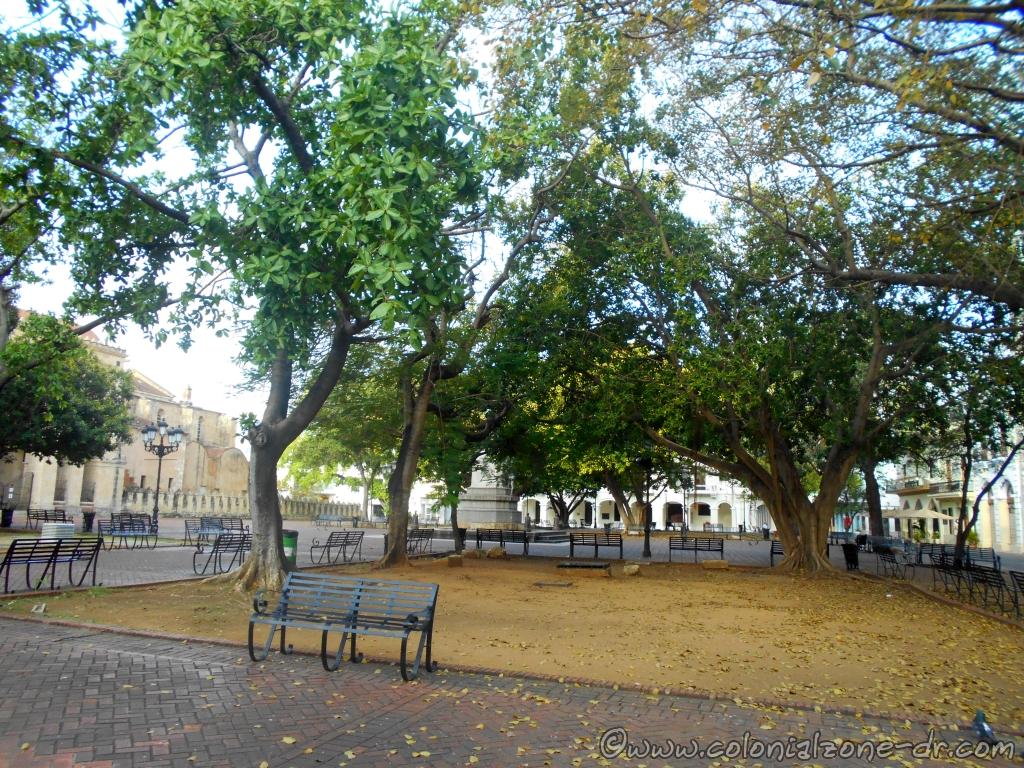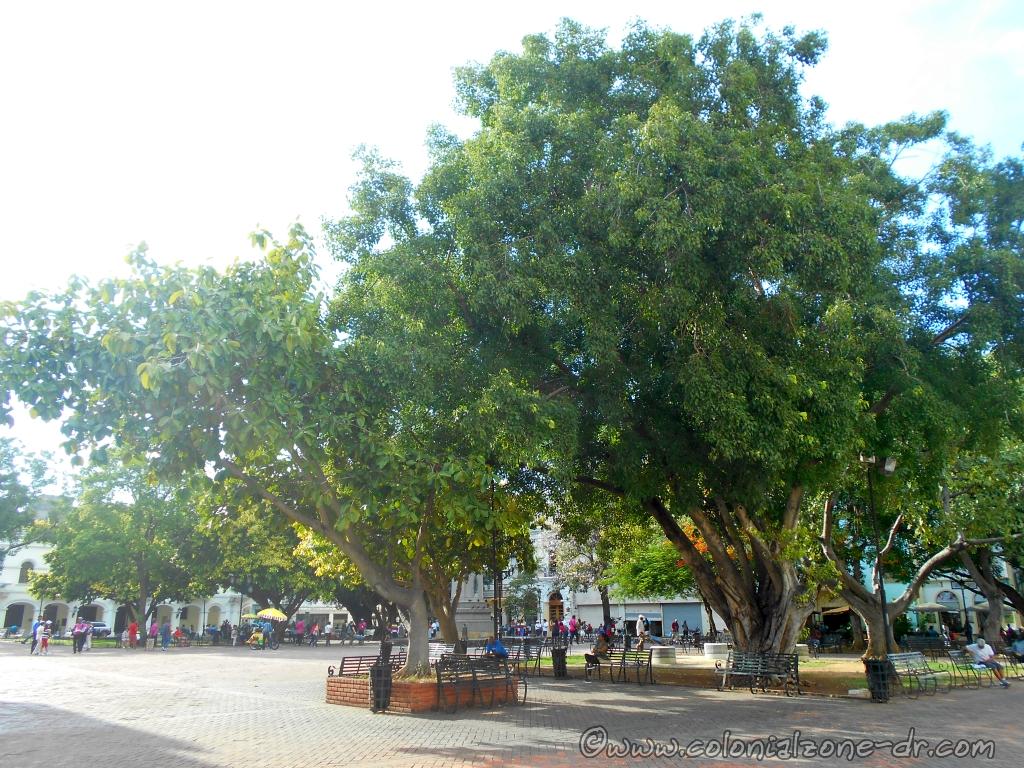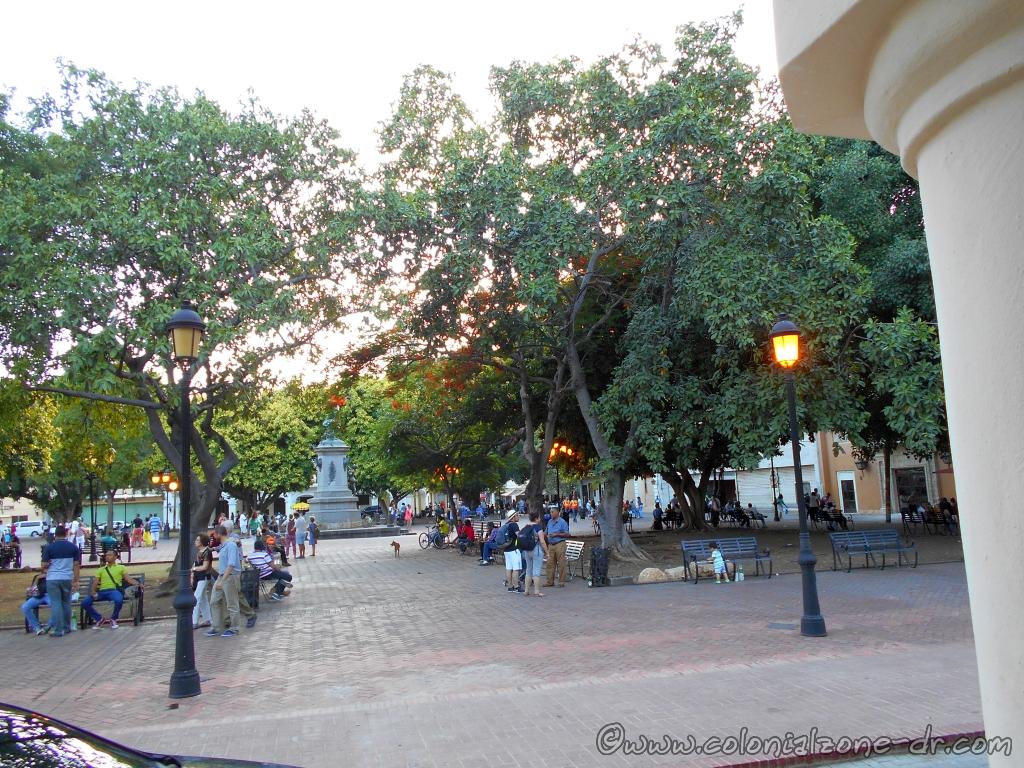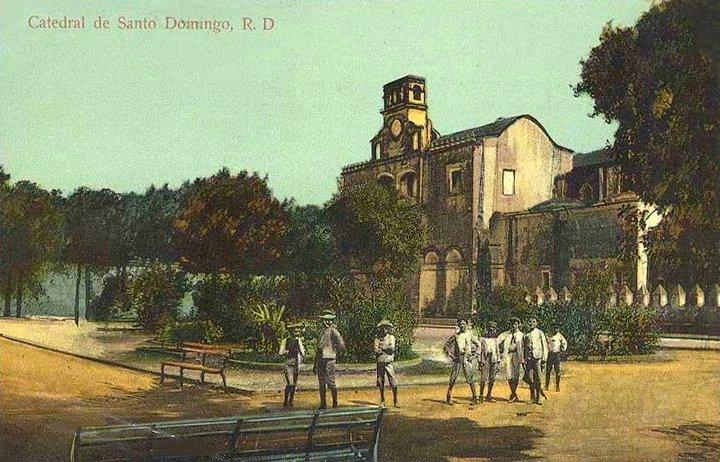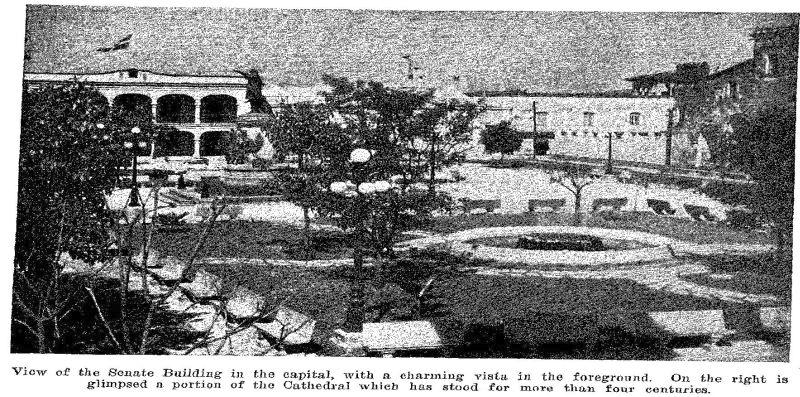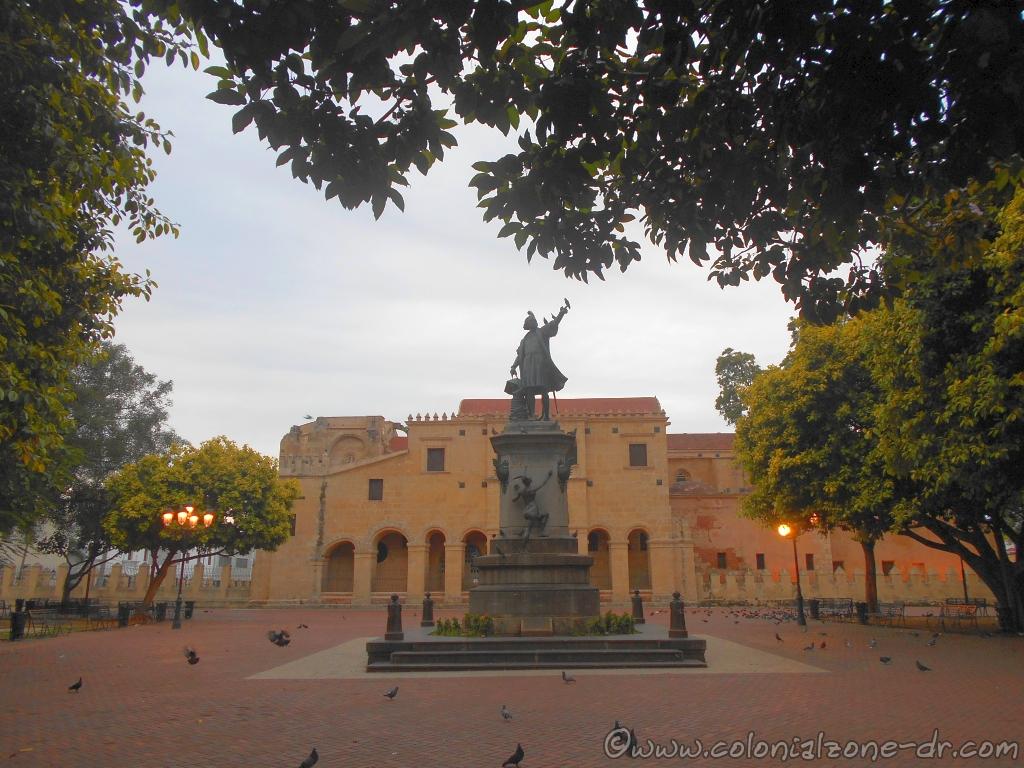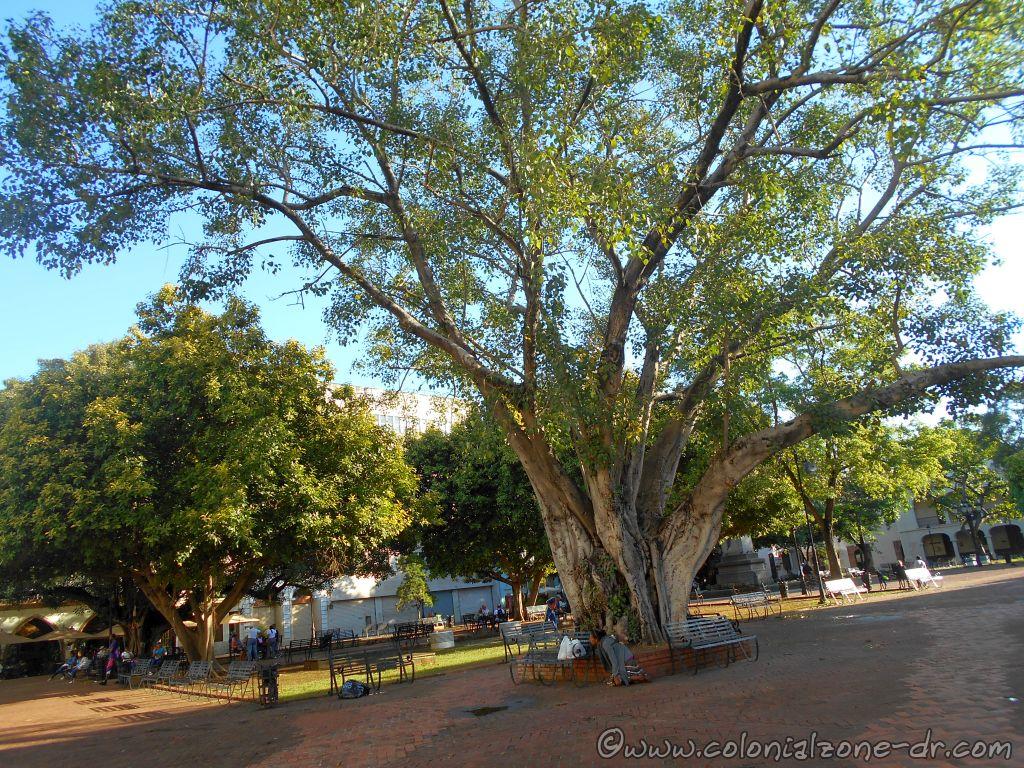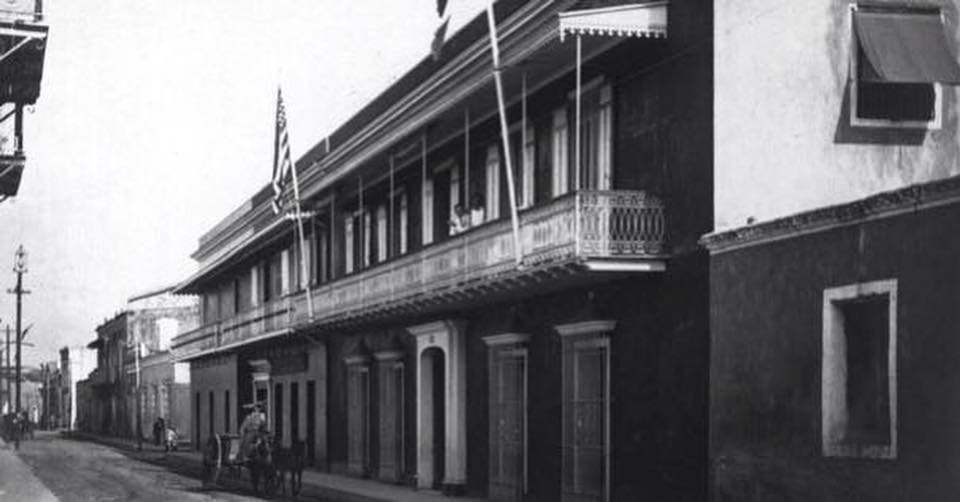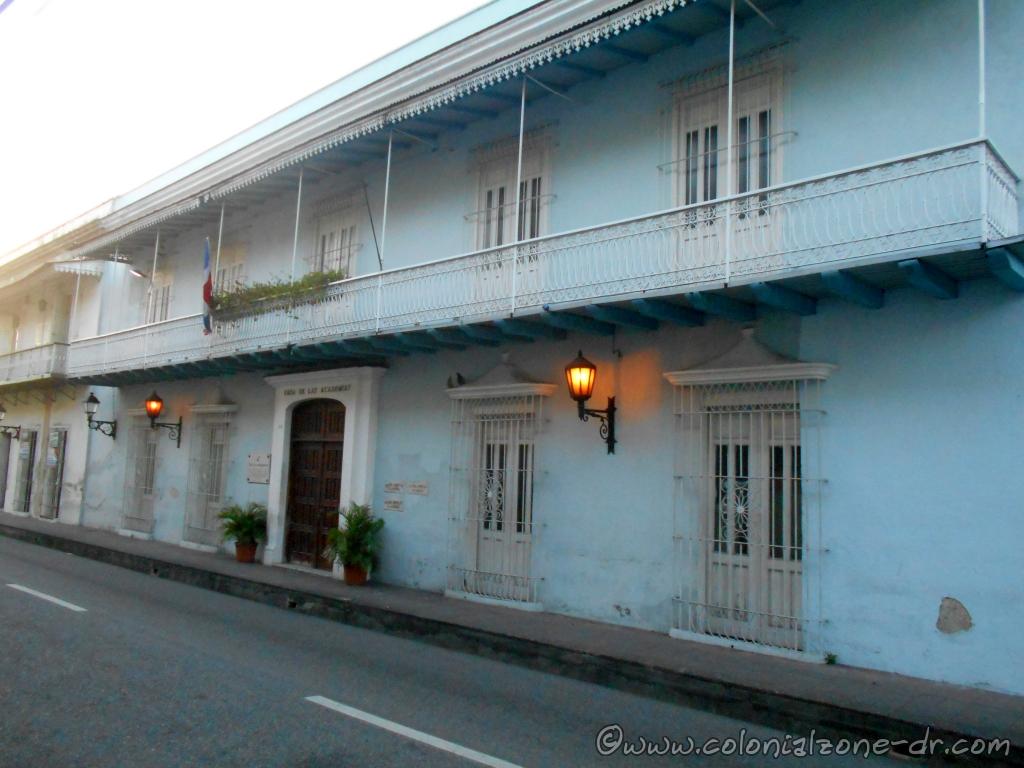Statue of Cristóbal Colón
In the center of Parque Colón / Columbus Park in the historical Colonial Zone one can see the huge statue of Italian explorer and navigator “El Gran Almirante” Christopher Columbus / Cristóbal Colón who the park is named after. This bronze statue dates back from February 27, 1887. It is the work of French sculptor Ernest Gilbert.
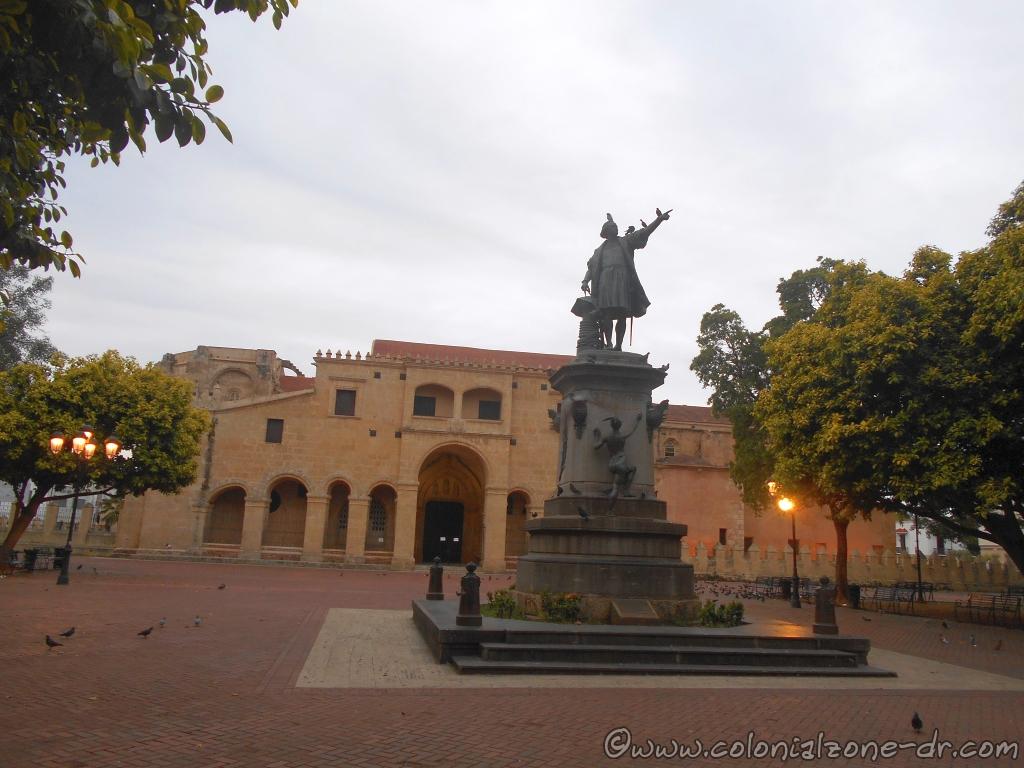
The controversial sculpture shows the native Taino Princess known as Anacaona writing Columbus’ name in gold. She is reaching towards Columbus standing atop the pillar in his arrogant glory. Some say that the half-naked indigenous woman who lies at his feet symbolizes the meeting of the two cultures, while others see her as a symbol of the abuse and mistreatment the native inhabitants were subjected to by the conquerors.
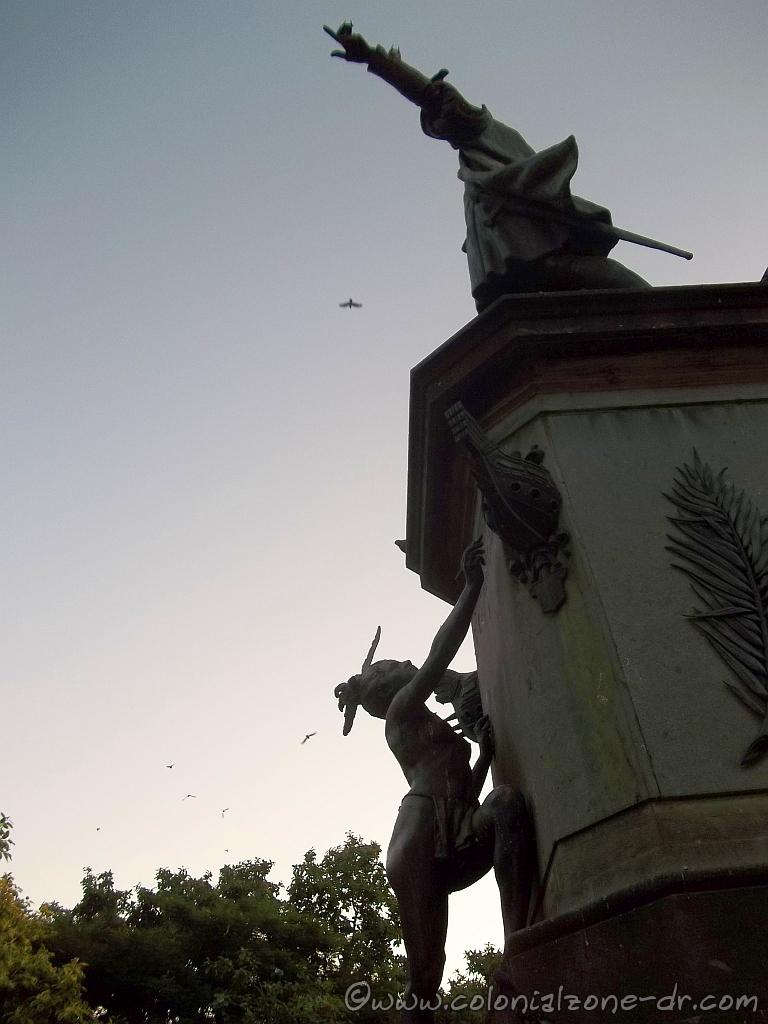
The monument of Columbus sits on a marble pedestal designed by Engineers Thomaset, Soler y Carranza. There is also a palm branch on the side of the pedestal with 4 ships protruding from each of the 4 corners of the pedestal. I have done much research and cannot find any information about these parts of the statue.
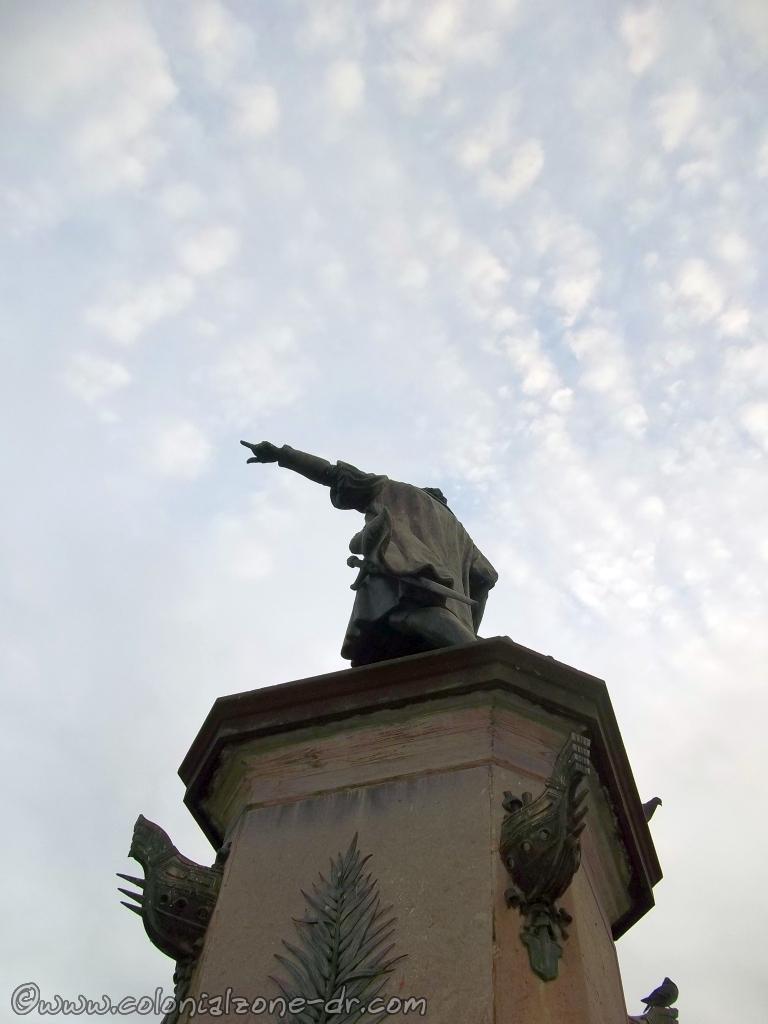
The plaque at the base of the monument reads:
Ilustre y Esclarecido Don Cristoval Colon
“Monumento escultorico en honor al gran almirante Don Cristobal Colon descubridor del nuevo mundo primer virrey y gobernador de AMERICA realizado por el artista Ernesto Gilbert inaugurado el 27 de febrero de 1887”
Illustrious and enlightened Sir Christopher Columbus.
“Sculptural monument in honor of the great admiral Don Cristobal Colon discoverer of the New World first viceroy and governor AMERICA by artist Gilbert Ernesto opened on February 27, 1887.”
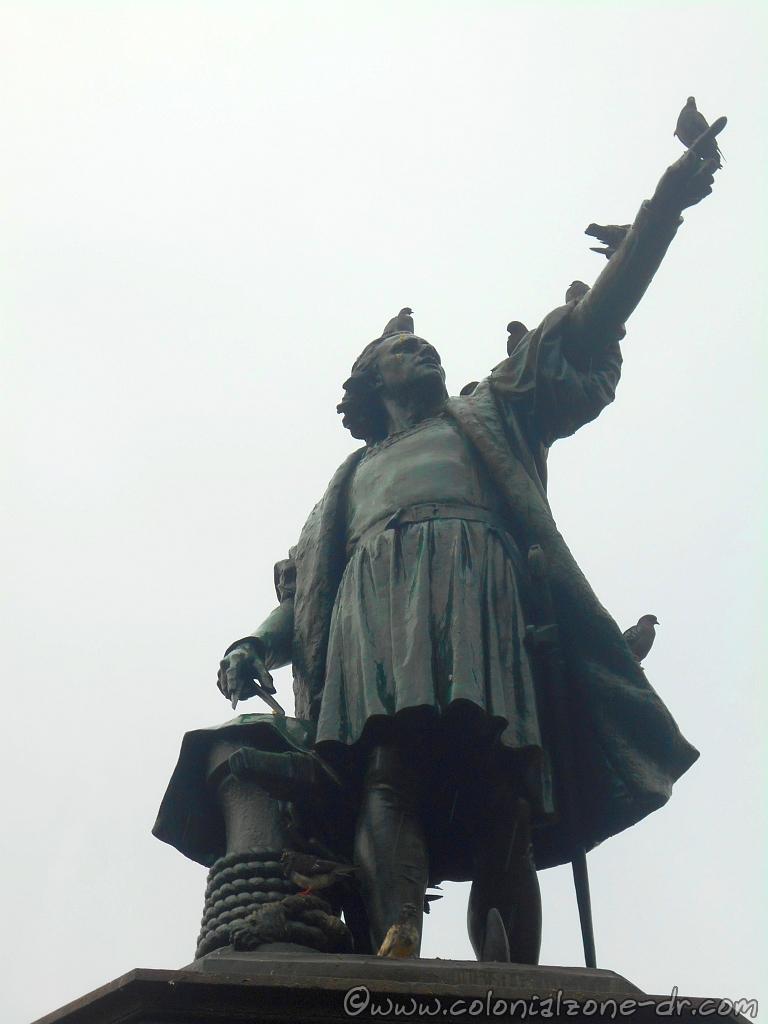
Interesting Facts
*Columbus has his left arm extended to the northwest pointing in the direction of where he came from.
*There are no pictures of Columbus in existence. The way he looks is an artistic creation.
*To mention Christopher Columbus’s name is very unlucky. Instead of using his name, Dominicans call him “El Almirante” / “The Admiral.” (more superstitions and bad omens)
*It is a local joke that the statue of Montecinos, with his hand raised to his mouth, is yelling “¡Ladrone! ¡Ladrone! / Thief! Thief! ” and Columbus is pointing “¡Por ahí! ¡Por ahí! / Over there! Over there!”.
*Columbus Day is not celebrated in the Dominican Republic. October 12th is called Dia de la Raza / Day of the Races. It is to celebrate all persons, white, black and aborigines and how they mixed into one race.
*Columbus remains originally were located inside the Catedral de Santa María la Menor but were said to be moved to the newly built Faro Colón / Columbus Lighthouse. But some say his remains are in Spain. The controversy continues.
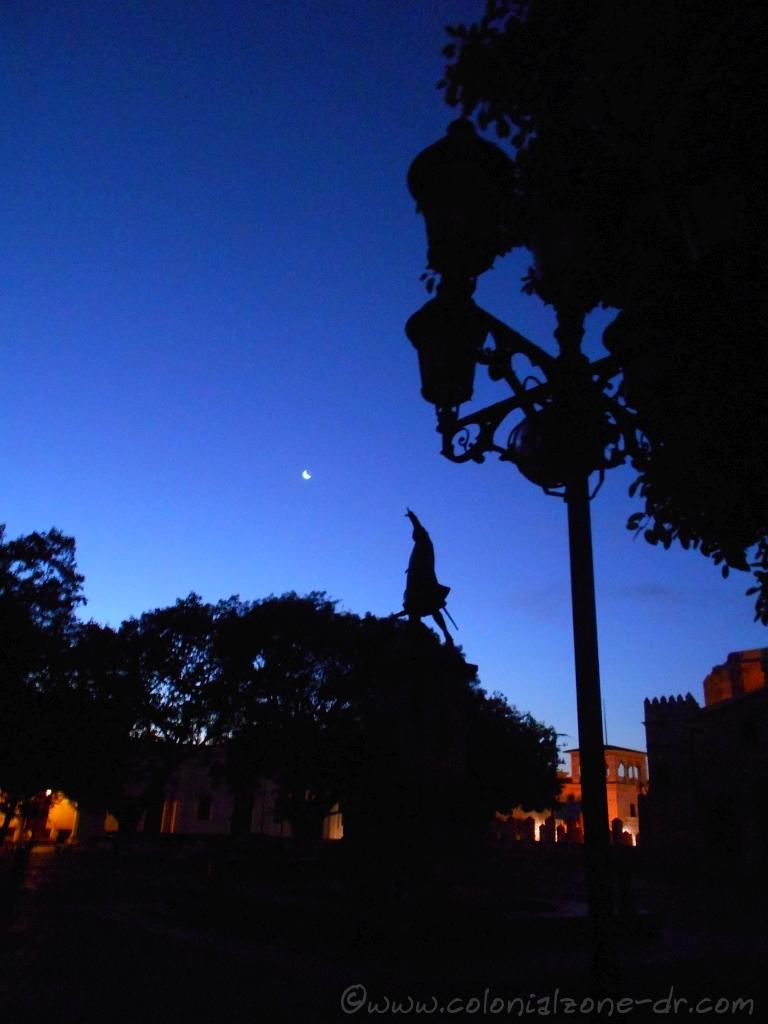
Location
You can see this monument dedicated to the Grand Admiral Cristobal Colón in Parque Colón on Calle el Conde in the center of the old section of the Colonial Zone.

